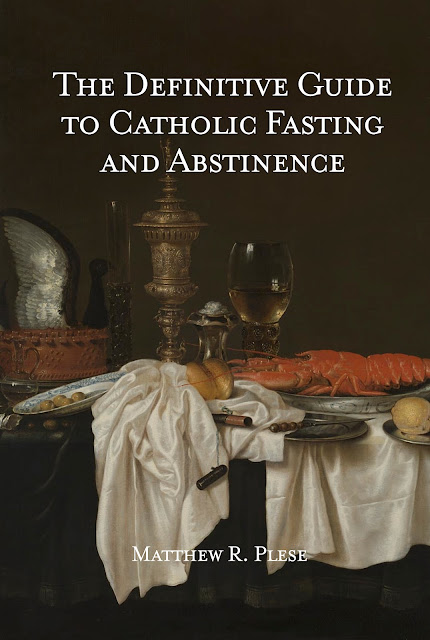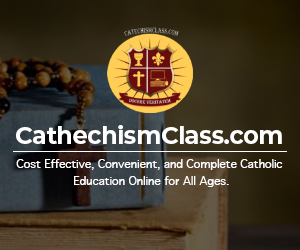Today is the last Sunday after Pentecost. Today, we are reminded by Christ, in the Gospel, of the signs and warnings which shall herald the day of judgment, that terrible day which will witness at once the resurrection of the dead and the approach of the divine Judge. Of all these signs, I have selected for your consideration today the appearance in the heavens of the sign of the Son of Man, the cross, which will announce the coming of Christ.
What Christ has revealed to us of the signs which shall be sent as warnings of His advent, should cause us to reflect most deeply upon those things which shall come; upon us at the end of the world, when, in the expressive words of the Gospel, “Men shall wither away with fear and expectation of what is to come upon them.”
It should so dispose our hearts that we may be ready to appear before the tribunal of Christ, whenever He shall call us from this earth. There is one circumstance of which our Lord makes mention, and which alone is of sufficient weight to strengthen us in our resolution to live only for the purpose for which He has given us our very existence, and for which He has accomplished in us the great work of redemption. I allude to the appearance of the cross in the heavens on the last day. This cross will show forth all the infinite and adorable perfections of the divine nature.
Mary, mother of God and mirror of His adorable perfections, pray for us that we, upon the terrible day of final reckoning, may be enabled to rejoice with thee when that cross, by which thou didst stand to hear the last sigh of thy dying Son, appears unto the world once more! I speak in the most holy name of Jesus, for the greater honor and glory of God!
God would not one day judge the world if He were not just, on account of the angels, as St. Paul assures us. A remarkable expression. The sense of these words of the Apostle may be thus explained: If the ways of God were not all the ways of truth and emanations of His infinite perfections, the angels, whom God created as beings of the highest order, and at the same time pure and holy, would never allow what is wrong to pass as just.
In this world we are not permitted to behold our Lord face to face, nor to know Him as He is in the splendor of His majesty; so it is with His works which are, as it were, concealed by a vail which we dare not, if we could, remove. I will make use of a comparison. The mysterious workings of divine Providence, as time passes on, weave, as it were, a carpet of the various acts and scenes of our lives. Look upon the reverse side, and you will see the threads running hither and thither, without beauty or apparent design. But upon the day of judgment the gorgeous texture will be turned in the presence of all mankind, of the angels, and of all the devils. All will then behold with vision, clear and distinct, how the Lord hath ever worked to lead the souls created by His divine power to eternal happiness, and that what ever came to mar His benignant plans arose from an abuse of that free-will with which every rational being has been endowed. Even Lucifer, with all his fallen angels will pronounce his confiteor, and, with the millions of reprobate souls who chose to array themselves under his standard, will give testimony to the justice of God, impelled to it by the sight of the cross in the heavens.
The cross on the last day will stand forth in bold relief upon the sky, as the symbolical expression of the work of redemption, and also as a mirror in which the divine attributes appear most brilliant and resplendent.
First, it will reflect the splendor of the divine omnipotence by which He called the world into existence; for nothing is impossible with God, as the angel declared to Mary when he announced the great mystery of the incarnation, the most sublime triumph of the Almighty. By naught, save omnipotence, could this wonder of wonders have been effected. Omnipotence alone could unite the divine nature with a human nature by the hypostatic union of the second person of the blessed Trinity with that human nature. O miracle! God might create myriads of worlds, each one more glorious than the other, yet it would not be such a proof of His almighty power as His becoming man. For He did not join Himself to a human person, but assumed the human nature in Christ, and thereby became as truly man, as He was God from all eternity. O wonder of wonders!
The cross will also shine forth brilliantly on the last day, as the glorious reflex of the divine understanding and wisdom, whose triumph comes from the Incarnation of the Son of God. Only a God could have conceived this sublime idea of thus reconciling the fallen human race to God, of changing the curse of sin into a source of happiness, the loss of paradise into eternal beatitude.
The holy cross will also sparkle on the last day in the firmament as the reflected splendor of God’s in finite mercy. How fitting it is that this divine attribute should not only be glorified by the ransom of the fallen human race, as illustrated in the cross, but also be entirely vindicated before all men. If it were possible for one person to take upon himself the burden of the sins of the entire world, and if he had at the same time been guilty himself of the most heinous crimes which the heart can conceive, in the Sacrament of Baptism, at the words “I baptize thee in the name of the Father, and of the Son, and of the Holy Ghost,”–supposing true contrition on his part,–all those sins would be remitted, and every stain washed away from his soul; so that if he were to die that moment, he would immediately enter heaven through the merits of Christ. And if a Christian had sullied the whiteness of his baptismal robe, and marred its beauty not only, with some venial faults, but with the most diabolical crimes; after a true contrition and sincere confession on the part of that sinner, at the words of the priest: ” I absolve thee,” united to the petition of Christ: “Father, forgive!” his guilt would be washed away.
Upon the day of final doom the cross will reflect the sanctity and holiness of the Lord of heaven and earth; for upon it the Sacred Heart of Jesus was opened, and from the wound came forth the Holy Church supplied with the means of salvation sufficient to make us, even in this life, pure as the angels in heaven.
On that momentous day, the cross will beam with glorious light,–indeed, the splendor of its radiance will fall with scathing brightness upon those wretched spirits whose doom is everlasting fire, for it will be the reflection of that divine attribute justice.
It will also irradiate the heavens with a lovely light, the reflex of God’s longanimity. As Christ stretched forth His arms upon the cross, so will He continue to do unto the end of time, as a sure refuge for all the children of men.
On that last and terrible day the holy cross will brightly shine to reflect the truth and fidelity of the Lord. For the truths of our divine faith are the Word of God promulgated by the Church, which remains as unchangeable and infallible in its doctrines as when it came forth from the Heart of our Lord on the cross. The work of redemption, consummated by Christ on the cross, was not a work of necessity, but of the infinite love of God.
Happy we, beloved in Christ, if we, as the cross continually exhorts us to do, glorify God in all His attributes by our virtues while on earth; then will we most surely hail its appearance in the heavens with joy and rapture on the resurrection morn! Amen!


.jpg)





.jpg)
.jpg)
.jpg)

.jpg)






.jpg)


.jpg)







